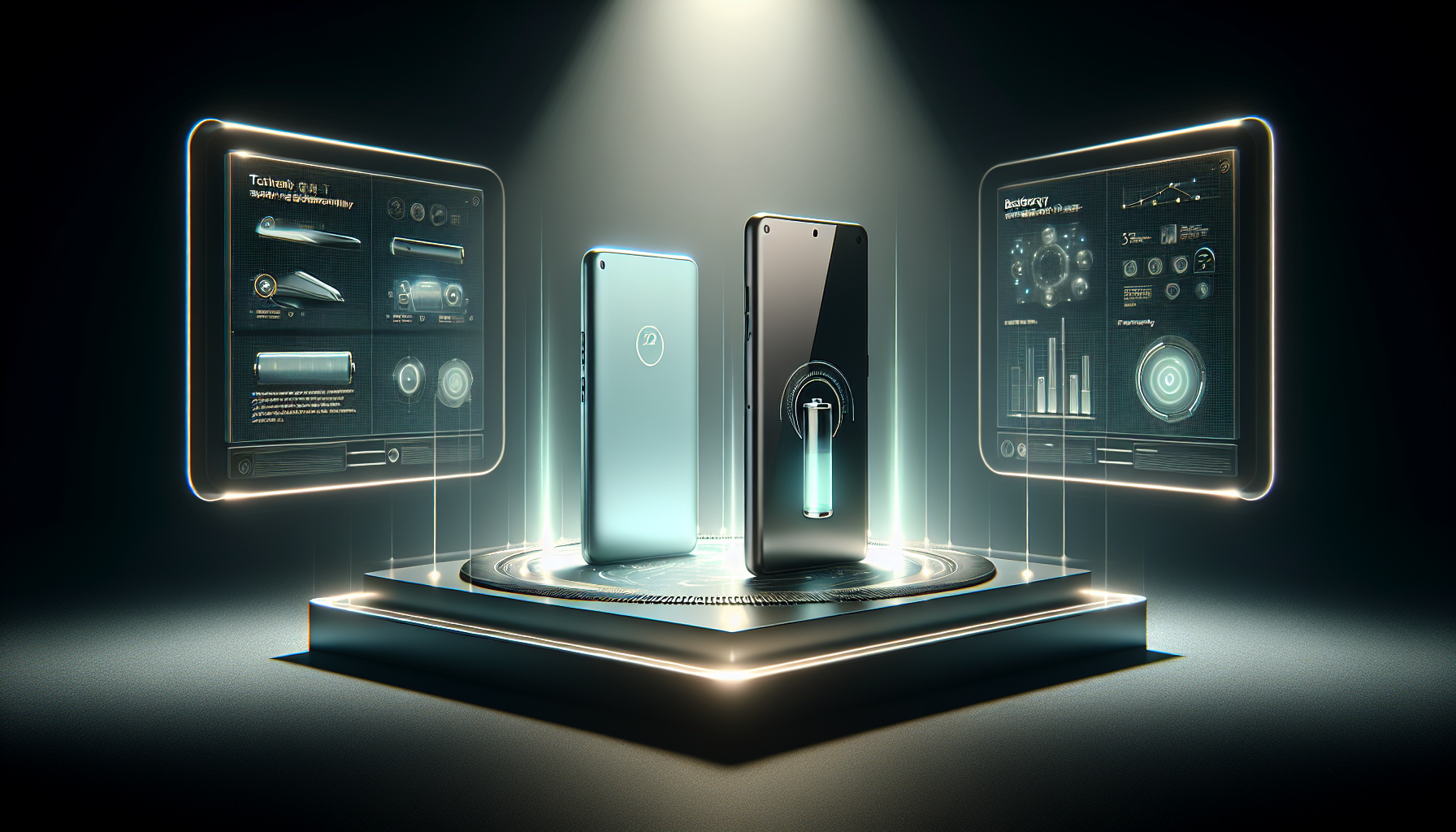Ultra-Slim Smartphones: An Insight into the iPhone 17 Air and Galaxy S25 Slim
With advancements in smartphone technology, manufacturers are redefining design aesthetics, aiming for lighter, thinner, and more stylish devices. The much-anticipated iPhone 17 Air and Galaxy S25 Slim are believed to exemplify this evolution with their ultra-slim designs. However, these thinner models may involve compromises, especially concerning battery life and heat regulation. Here’s what we currently know about these new devices and their expected performance.
The iPhone 17 Air: Apple’s Slimmest iPhone Yet
Design and Specifications
The iPhone 17 Air is expected to showcase an exceptionally thin form factor, with a rumored thickness of merely 5.5mm. This would establish it as the thinnest iPhone ever made, reflecting Apple’s commitment to innovative design. While this sleek look is bound to attract attention, it raises concerns regarding battery life and overall performance.
Battery Life and Efficiency
Leaked information indicates that the iPhone 17 Air will include a battery capacity of between 3,000 mAh and 4,000 mAh. For comparison, the iPhone 16 series had battery capacities from 3,279 mAh (iPhone 14) to 4,685 mAh (iPhone 16 Pro Max), typically achieving strong battery performance.
Apple excels in battery optimization due to its cohesive hardware-software integration. It is anticipated that the iPhone 17 Air will be powered by the A19 chip, rumored to be more energy efficient than its predecessors. Furthermore, a 120Hz OLED display is likely to support power savings by dynamically adjusting refresh rates according to usage.
Heat Regulation Issues
One drawback of the iPhone 17 Air’s slim profile could be its heat regulation. Incorporating an effective thermal dissipation system into such a slender design is challenging. Nonetheless, Apple has a history of resolving these engineering challenges, evident in the M4 iPad Pro, which maintained superior battery life and thermal efficiency despite its thin construction.
The Galaxy S25 Slim: Samsung’s Take on Ultra-Slim Innovation
Design and Specifications
The Galaxy S25 Slim is projected to be marginally thicker than the iPhone 17 Air, with an estimated thickness of 6.4mm. While still exceptionally slender by industry benchmarks, this slight increase might accommodate a slightly larger battery and enhanced heat management.
Battery Size and Efficiency
Similar to the iPhone 17 Air, the Galaxy S25 Slim is rumored to feature a battery capacity between 3,000 mAh and 4,000 mAh. While Android users generally prefer larger battery sizes, Samsung’s employment of the Snapdragon 8 Elite chipset could optimize energy efficiency. This chipset has already shown remarkable battery performance in devices such as the Galaxy S24 Ultra, making it a capable rival for the S25 Slim.
Additionally, Samsung is likely to utilize its proficiency in AMOLED display technology to further boost energy efficiency. If the design takes on a slightly thicker profile, it could potentially house a larger battery than that of the iPhone 17 Air.
Ultra-Slim Smartphones: The Wider Perspective
Competing with Chinese Manufacturers
The shift of both Apple and Samsung towards ultra-slim designs may incite reactions from Chinese manufacturers renowned for their aggressive innovation strategies. Reports suggest that some Chinese brands might release their own ultra-thin devices featuring larger batteries (5,000+ mAh) and enhanced photography capabilities, potentially posing a challenge to Apple and Samsung’s market presence.
Advancements in Battery Technology
Looking ahead to 2025 and beyond, both companies are reportedly investigating next-generation battery technologies to address the challenges unique to ultra-thin designs. Samsung is experimenting with innovative battery materials, while Apple is exploring new battery configurations that could significantly boost energy density without increasing volume. These innovations could open doors for future ultra-slim devices with greatly improved battery performance.
Conclusion
The iPhone 17 Air and Galaxy S25 Slim signify remarkable developments in smartphone design, presenting ultra-slim profiles that test engineering capabilities. Although their reduced battery capacities may raise concerns, enhancements in chip efficiency and display technology are expected to alleviate these issues. Ongoing advancements in battery technology also promise to yield better performance in future models.
As the smartphone landscape develops, manufacturers are evidently focusing on both aesthetic appeal and practical functionality. Whether you lean towards iPhone or Galaxy, 2025 is poised to be an exhilarating year for technology aficionados.
Frequently Asked Questions (FAQ)
1. What is the thickness of the iPhone 17 Air and Galaxy S25 Slim?
- The iPhone 17 Air is anticipated to be 5.5mm thick, establishing it as Apple’s most slender device to date. The Galaxy S25 Slim is expected to measure slightly more at 6.4mm.
2. What battery capacity can we expect in these devices?
- Both smartphones are believed to have battery capacities ranging from 3,000 mAh to 4,000 mAh, which is lower than many existing flagship models.
3. Will the smaller battery sizes affect their performance?
- Both Apple and Samsung are utilizing energy-efficient chipsets (A19 for Apple and Snapdragon 8 Elite for Samsung) alongside advanced display technologies to enhance battery lifespan. Despite the smaller capacities, performance is expected to remain adequate for most users.
4. Which phone might manage heat better?
- The Galaxy S25 Slim, with its slightly increased thickness, may have an advantage in heat dissipation. However, Apple has demonstrated its competence in maintaining effective heat management in slim models such as the M4 iPad Pro.
5. How will these new models compare to their predecessors?
- The iPhone 17 Air and Galaxy S25 Slim are set to be thinner but could have reduced battery capacities compared to older models. Nevertheless, efficiency improvements are likely to compensate for this.
6. Are there options with larger batteries available?
- For those prioritizing battery longevity, flagship models like the Galaxy S24 Ultra or upcoming devices from Chinese brands may provide larger battery options.
7. Will battery technology see improvements soon?
- Both Apple and Samsung are reportedly developing next-gen battery technologies that could notably increase energy density, potentially making ultra-thin devices much more viable in the near future.
